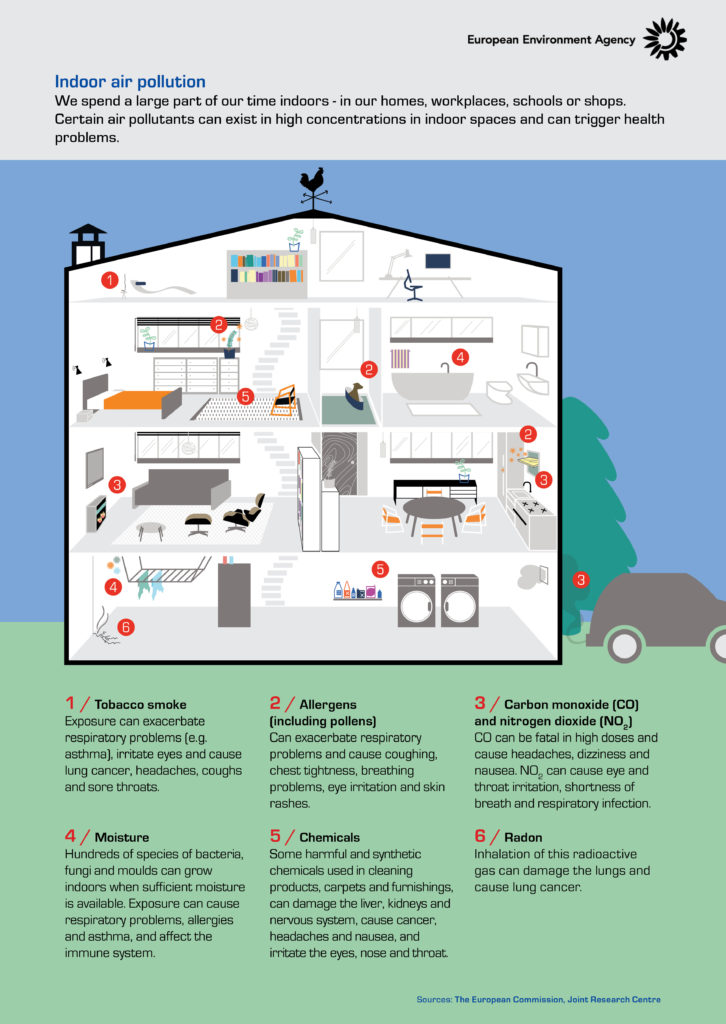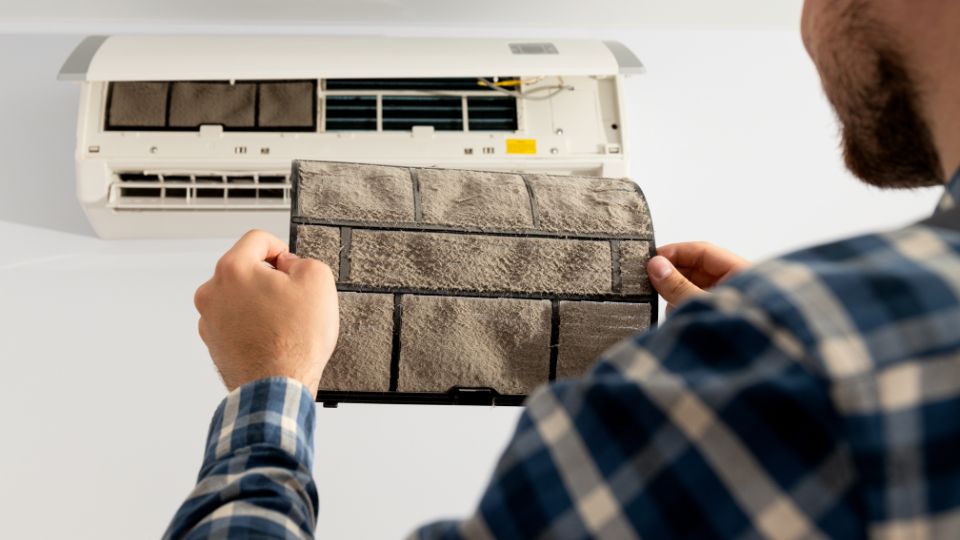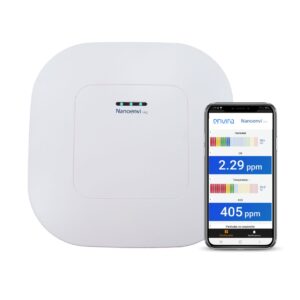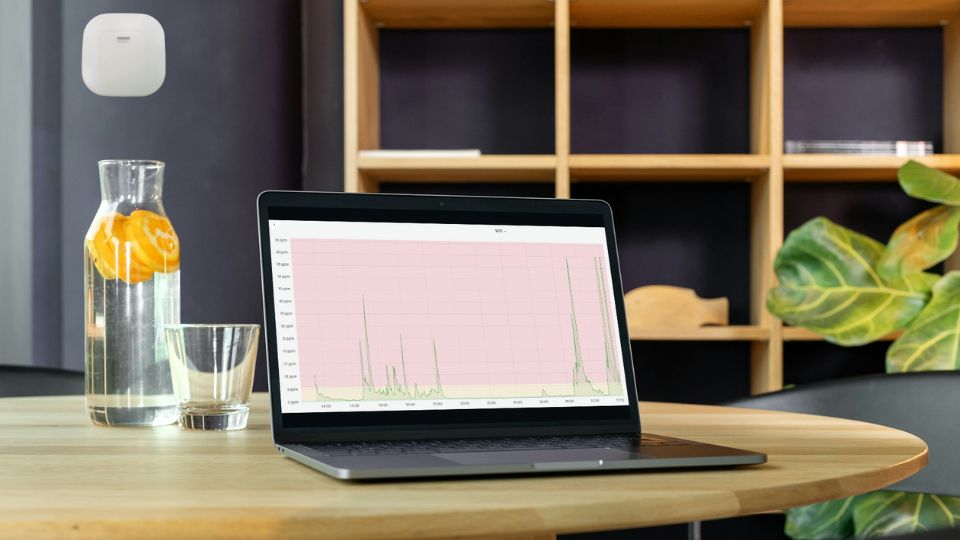As we spend most of our time indoors, whether at home, in the office or in public places, it is important to be aware of what indoor air quality is, how it affects our health and what technologies are available to measure and improve it.
What is indoor air quality?
Indoor Air Quality (IAQ) refers to the purity of the air inside a building or enclosed space and is directly dependent on the concentration and distribution of airborne pollutants and is fully interrelated with outdoor air quality.
According to the World Health Organization (WHO), air pollution is one of the greatest environmental threats to human health, along with climate change, and new global guidelines published in 2021 provide clear evidence of the harm to human health from poor air quality, even at lower concentrations than previously thought.
WHO also provides guidelines and recommendations focusing on a range of pollutants and parameters that can affect indoor air quality.
What are the main indoor air quality pollutants?
The main air pollutants that affect the health and comfort of the occupants of an indoor environment are identified and grouped into:
- Gases.
- Particulate matter.
- Biological pollutants.
Factors such as temperature, relative humidity or barometric pressure also have a direct impact on indoor air quality.
The following image shows several of the most usual pollutants indoors.

Indoor air quality. Source: European Environment Agency CC BY 2.5 DK
What are the main gaseous indoor air pollutants?
Indoor air quality can be affected by gaseous pollutants from a variety of sources, including fuel combustion, building materials, furniture, cleaning products and other everyday activities.
Carbon monoxide (CO), for example, is produced by the incomplete combustion of fuels such as natural gas, wood and coal. Exposure to this gas can cause anything from headaches and dizziness at low concentrations to death at high levels.
CO2, or carbon dioxide, is a by-product of human respiration and the burning of fossil fuels. Elevated levels of CO2 can indicate inadequate ventilation, leading to poor concentration and cognitive performance.
Volatile organic compounds (VOCs) are chemical compounds that are highly volatile at room temperature. They include benzene, toluene, xylene or formaldehyde and are released into the air from building materials, paints, adhesives, furniture, cleaning and personal care products. VOCs mainly cause respiratory irritation and can have long-term health effects.
Nitrogen oxides (NOx) from outdoor air pollution caused by vehicles and industrial equipment can enter indoor spaces and affect respiratory health.
Ground-level ozone (O3), caused by the interaction of sunlight and pollutants, can be harmful to respiratory health. In fact, certifications such as the Well Building Standard (1), a framework for creating and certifying spaces that promote human health and well-being, include ozone among the pollutants to be monitored in indoor spaces.
Less common gases such as radon and formaldehyde also have a direct impact on indoor air quality.
In this other article, we explain which are the most dangerous primary and secondary pollutants in outdoor environments.
What is particulate pollution?
Particulate matter pollution, also known by the acronym PM, is pollution caused by small solid or liquid particles suspended in the air, ranging in size from PM10 (≤10 micrometres), PM2.5 (≤2.5 micrometres) and ultrafine particles (≤0.1 micrometres).
This pollution causes respiratory and cardiovascular problems because smaller particles can enter the bloodstream.
The main source of indoor particulate matter pollution is polluted outdoor air, as the main sources of particulate matter are dust generated by construction or vehicle traffic, industrial emissions, burning of wood, coal and other organic materials, and fires.
What are the biological pollutants that affect indoor air quality?
According to the Spanish National Institute for Safety and Hygiene at Work (INSHT)(2), the quality of the indoor environment in buildings depends on many physical, chemical and biological factors.
Indoor air can contain a complex and variable mixture of micro-organisms, microbial volatile organic compounds (MVOCs), pollen, dust mites, insect parts and droppings, animal hairs and dander, etc. These bioaerosols play an important role in indoor air pollution, accounting for between 5 and 34% of total indoor air pollution.
Ambient air is the main source of biological contamination in buildings, as spores, fungal fragments, pollen and environmental bacteria can enter the building through various routes such as air conditioning, windows, cracks, etc.

How to check indoor air quality
The only way to know whether the air quality is good or bad is to take measurements to assess the concentration of the pollutants and parameters mentioned above.
There are different methods and technologies for measuring indoor air quality, depending on the specific pollutant being assessed.
One example is radon monitors, which are specifically designed to measure the concentration of this radioactive gas in cases where there may be leaks from contaminated soils.

Measurements are taken continuously and in real time, and it has a data visualisation platform that even allows alerts to be configured when a pollutant exceeds set thresholds.
It is also certified by RESET as an accredited monitor(3) for continuous monitoring of indoor air quality.
How to improve indoor air quality?
Effective ventilation strategies are the way to improve indoor air quality.
But to do this, it is essential to have a monitor that allows us to know the state of the air we breathe.
We have all experienced, to one degree or another, the consequences of a polluted environment: headaches, lack of concentration, respiratory irritation…
By the time we get to this point, we have already been breathing poor quality air for a long time, so the use of a real-time monitoring device that warns us when pollutant concentrations exceed the limits allows us to ventilate much more effectively and preventively.
And it also works the other way round: because indoor air quality is so closely linked to outdoor air quality, it also tells us when to close the windows when the outdoor air is occasionally more polluted (construction, rush hour traffic, etc.).

References
[1] Well Building Standard – https://v2.wellcertified.com/en/wellv2/air/feature/1
[2] Instituto Nacional de Seguridad y Salud en el Trabajo INSST – https://www.insst.es/
[3] Reset Air Certification – https://www.reset.build/standard/air











